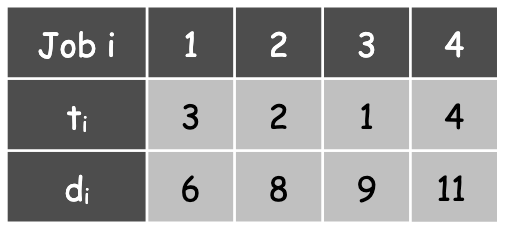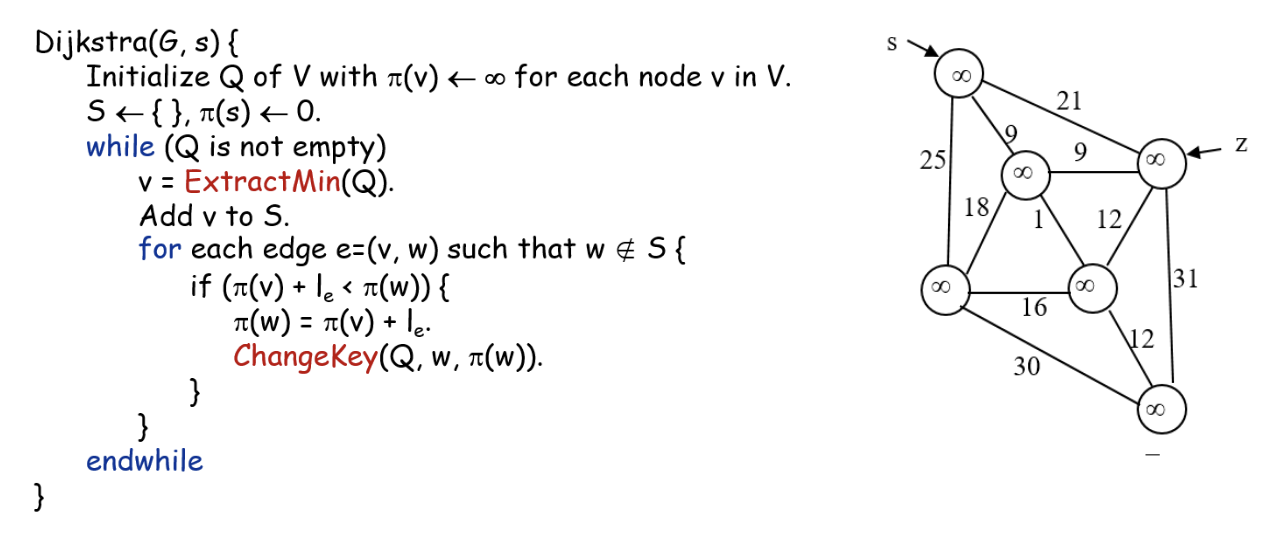Minimum Max-lateness Job Scheduling
Consider the four jobs () in the table below, where is the processing time and is the deadline of each Job . Show a job schedule that is optimal but does not follow the earliest-deadline-first strategy and contains at least one adjacent inversion. Then, repeatedly remove inversions until we have an optimal schedule that can be generated using the earliest-deadline-first strategy. Show the job schedule after removing each inversion.
Getting the obvious out of the way, we know the earliest-deadline-first strategy would yield:
Let’s start with an optimal scheule by use of inversions and then remove them one at a time:
To verify that this an an optimal scheduling we can verify the jobs are completed before their deadline(assume list number represents job #):
- completes with a time of , where deadline is
- completes at time , where deadline is
- completes at time , where deadline is
- completes at time , where deadline is
No lateness, so it is optimal.
We now check for adjacent inversions :
with has no inversion since . with does have inversion as . with does not have inversion as
We remove inversion by swapping and , yielding:
Verifying again:
- completes with a time of , where deadline is
- completes at time , where deadline is
- completes at time , where deadline is
- completes at time , where deadline is
Next inversions for :
with does have inversion as . with does not have inversion as . with does not have inversion as .
We remove inversion by swapping and , yielding:
We could verify, but we have now reached the earliest deadline first schedule and the deadlines are ordered.
Dijkstra’ Algorithm Tracing
Show the tracing of executing Dijkstra’s single-source shortest paths algorithm given below on the undirected graph given below. (We discussed this algorithm implementation in class.)
apologies if I did the drawing process incorrectly, I didnt understand the directions perfectly. I made one mistake merging two iterations together, but difficult to recover/fix unforunately.
Starting Point S
![]()
![]()
![]()
![]()
I skipped an iteration here by accident - cant fix easily, they were merged
![]()
Starting Point Z
![]()
![]()
![]()
![]()
![]()
![]()

